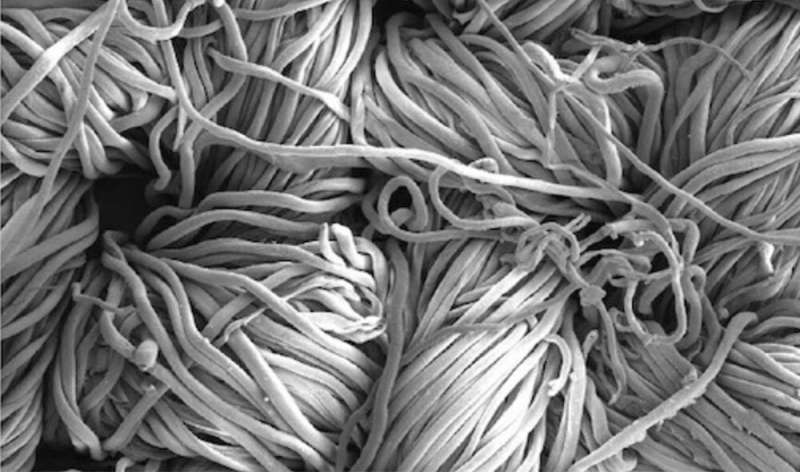A new antimicrobial cotton textile with Cu ions in nanofibers


Cotton textiles are ubiquitous in daily life, and they are also one of the primary mediums for transmitting viruses and bacteria. Conventional approaches to fabricating antiviral and antibacterial textiles generally load the functional additives onto the surface of the fabric and/or onto their microfibers. However, such modifications are susceptible to deterioration after long-term use due to leaching of the additives.
Recently, a transdisciplinary and multi-institutional research team led by Liangbing Hu, Herbert Rabin Distinguished Professor of Materials Science and Engineering (MSE) at the University of Maryland (UMD) and director of the Center for Materials Innovation (CMI), and William Bentley, Fischell Distinguished Chair in Engineering and director of UMD’s Robert E. Fischell Institute for Biomedical Devices, and Robert M. Briber, Professor of Materials Science and Engineering and Associate Dean for Research, developed a new antimicrobial cotton textile with Cu ions incorporated into the cotton structure at the molecular level (Cu-textile), which utilizes the strong coordination bonding between Cu ions and the cellulose molecules and shows antiviral, antibacterial, wearable, and washable properties.
This study was published in Nature Nanotechnology on December 30, 2022.
The Cu-textile displays high antiviral and antibacterial performance against the Tobacco mosaic virus (TMV) and Influenza A virus (IAV), as well as E. coli, S. typhimurium, P. aeruginosa, and B. subtilis bacteria.
More information:
Ji Qian et al, Highly stable, antiviral, antibacterial cotton textiles via molecular engineering, Nature Nanotechnology (2022). DOI: 10.1038/s41565-022-01278-y
Provided by
Brookhaven National Laboratory
Citation:
A new antimicrobial cotton textile with Cu ions in nanofibers (2023, January 10)
retrieved 10 January 2023
from https://phys.org/news/2023-01-antimicrobial-cotton-textile-cu-ions.html
This document is subject to copyright. Apart from any fair dealing for the purpose of private study or research, no
part may be reproduced without the written permission. The content is provided for information purposes only.



